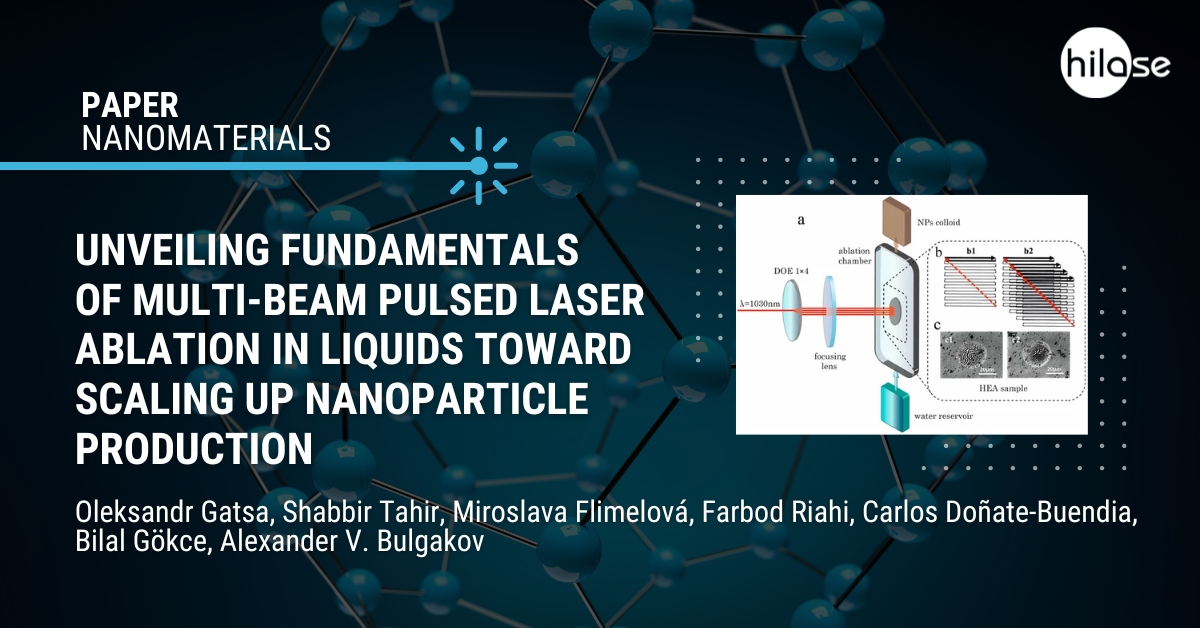Read a new paper published in the Nanomaterials journal and contributed to by HiLASIANS! Titled Unveiling Fundamentals of Multi-Beam Pulsed Laser Ablation in Liquids toward Scaling up Nanoparticle Production, its results suggest that nanoparticle PLAL productivity at the level of g/h can be achieved by the proposed multi-beam strategy using compact kW-class lasers and simple inexpensive scanning systems.

Oleksandr Gatsa (Postdoctoral fellow: Nanomaterials), Miroslava Flimelová (Associate scientist) and Alexander V. Bulgakov (Team Leader: Nanomaterials) collaborated with researchers from University of Wuppertal and Universitat Jaume I: Shabbir Tahir, Farbod Riahi, Carlos Doñate-Buendia, and Bilal Gökce.
Pulsed laser ablation in liquids (PLAL) is a versatile technique to produce high-purity colloidal nanoparticles. Despite considerable recent progress in increasing the productivity of the technique, there is still significant demand for a practical, cost-effective method for upscaling PLAL synthesis. Here we employ and unveil the fundamentals of multi-beam (MB) PLAL. The MB-PLAL upscaling approach can bypass the cavitation bubble, the main limiting factor of PLAL efficiency, by splitting the laser beam into several beams using static diffractive optical elements (DOEs). A multimetallic high-entropy alloy CrFeCoNiMn was used as a model material and the productivity of its nanoparticles in the MB-PLAL setup was investigated and compared with that in the standard single-beam PLAL. We demonstrate that the proposed multi-beam method helps to bypass the cavitation bubble both temporally (lower pulse repetition rates can be used while keeping the optimum processing fluence) and spatially (lower beam scanning speeds are needed) and thus dramatically increases the nanoparticle yield. Time-resolved imaging of the cavitation bubble was performed to correlate the observed production efficiencies with the bubble bypassing. The results suggest that nanoparticle PLAL productivity at the level of g/h can be achieved by the proposed multi-beam strategy using compact kW-class lasers and simple inexpensive scanning systems.
Read the FULL ARTICLE.








